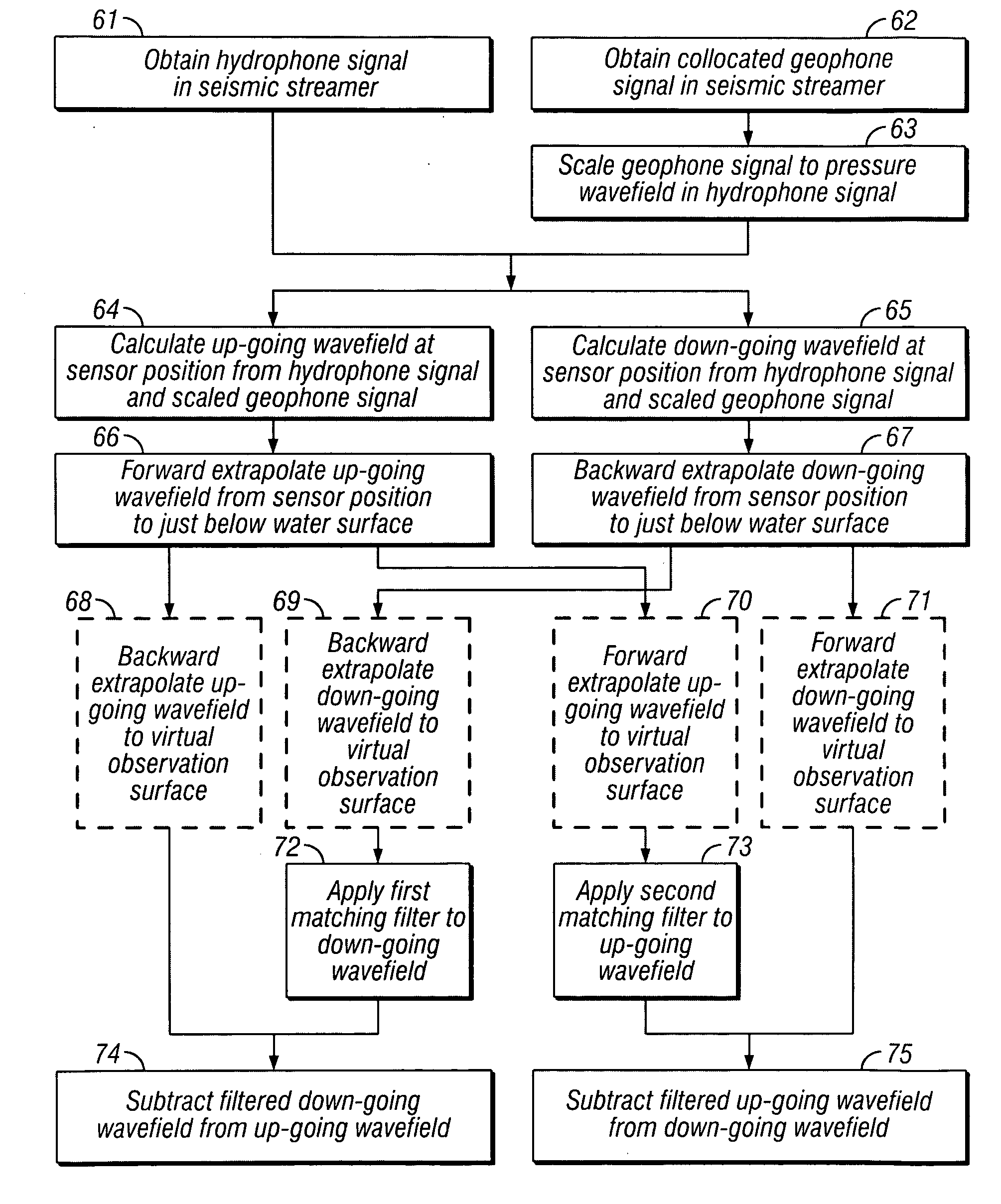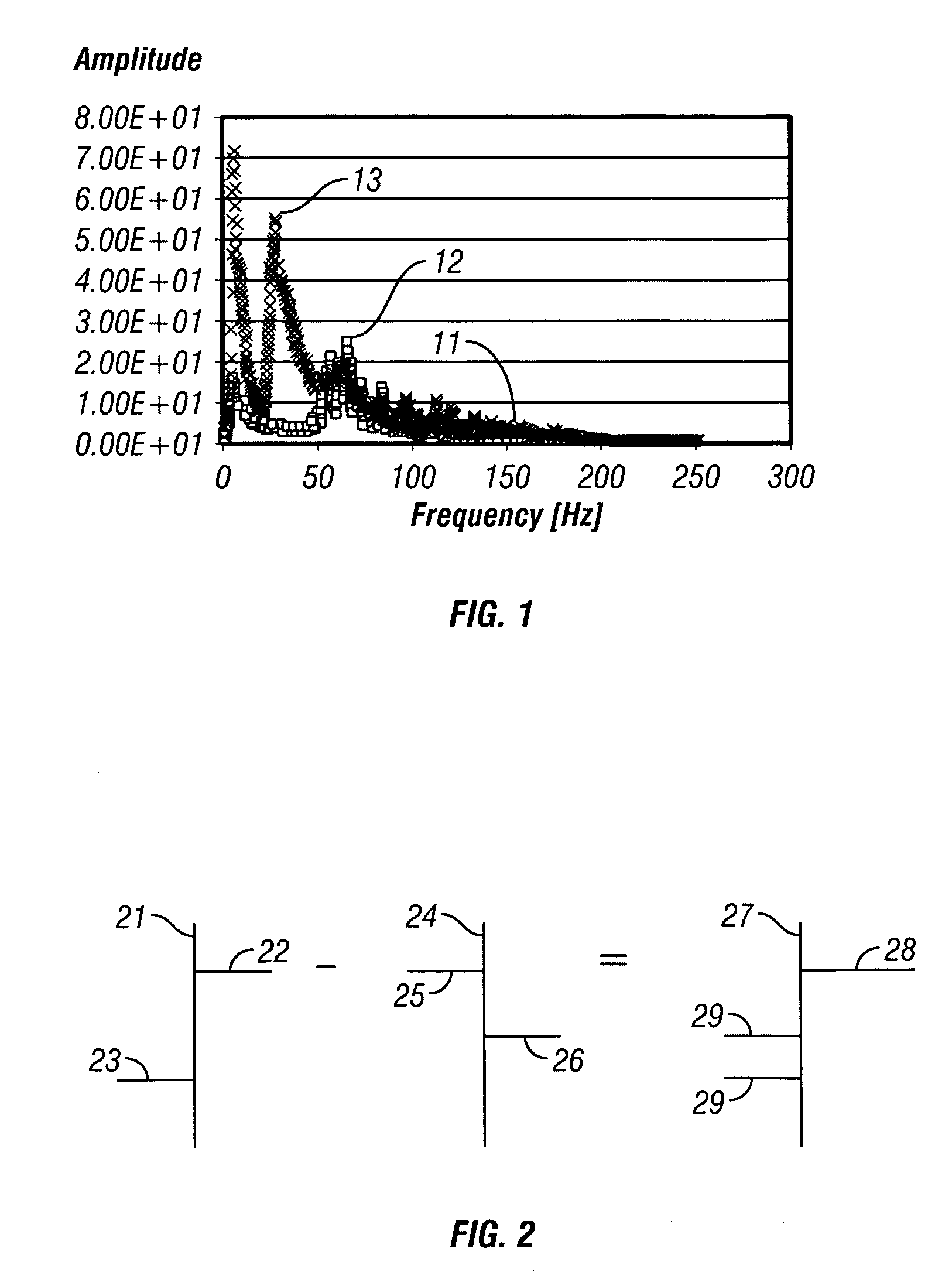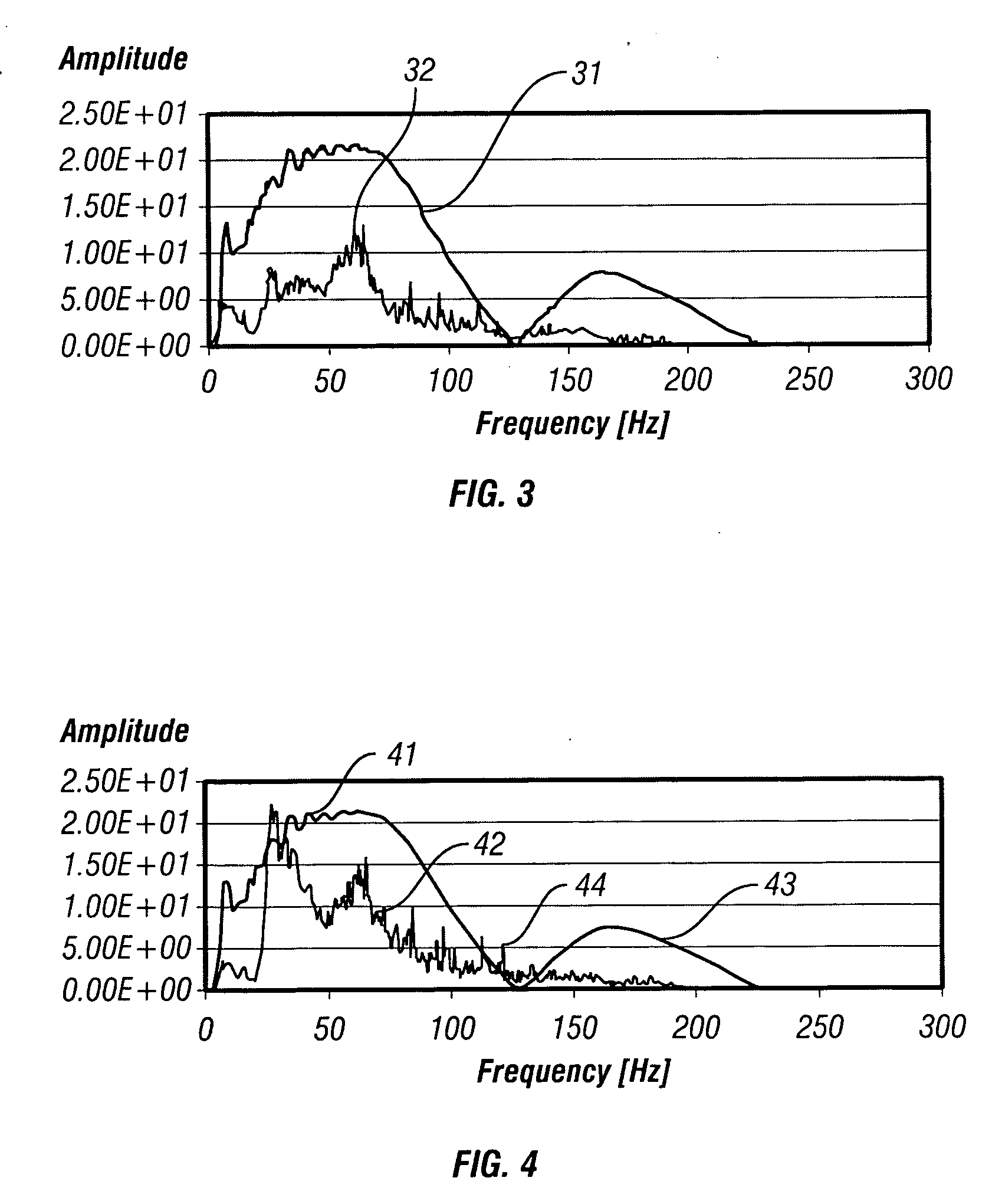Method for attenuating particle motion sensor noise in dual sensor towed marine seismic streamers
a technology of particle motion sensor and noise attenuation, which is applied in the field of geophysical prospecting, can solve the problems of cable vibration, difference in acoustic impedance at the interface, and increasing complexity of seismic data gathering operations
- Summary
- Abstract
- Description
- Claims
- Application Information
AI Technical Summary
Problems solved by technology
Method used
Image
Examples
Embodiment Construction
[0039]The invention is a method for processing dual sensor seismic data acquired by towed streamers during a marine seismic survey. In particular, the invention is a method for attenuating mechanical noise from a particle motion sensor signal in the dual sensor data. Particle motion sensors are typically particle velocity sensors, but other particle motion sensors, including particle acceleration sensors, may be used instead of particle velocity sensors in dual sensor streamers. Particle velocity sensors are commonly known in the art as geophones and particle acceleration sensors are commonly known in the art as accelerometers. The present invention will be described with embodiments employing geophones, but this sensor choice is for simplicity of illustration only and is not intended to be a restriction of the invention.
[0040]The method of the invention utilizes dual sensor seismic data, comprising the pressure wavefield as acquired by pressure sensors such as hydrophones and the v...
PUM
 Login to View More
Login to View More Abstract
Description
Claims
Application Information
 Login to View More
Login to View More - R&D
- Intellectual Property
- Life Sciences
- Materials
- Tech Scout
- Unparalleled Data Quality
- Higher Quality Content
- 60% Fewer Hallucinations
Browse by: Latest US Patents, China's latest patents, Technical Efficacy Thesaurus, Application Domain, Technology Topic, Popular Technical Reports.
© 2025 PatSnap. All rights reserved.Legal|Privacy policy|Modern Slavery Act Transparency Statement|Sitemap|About US| Contact US: help@patsnap.com



